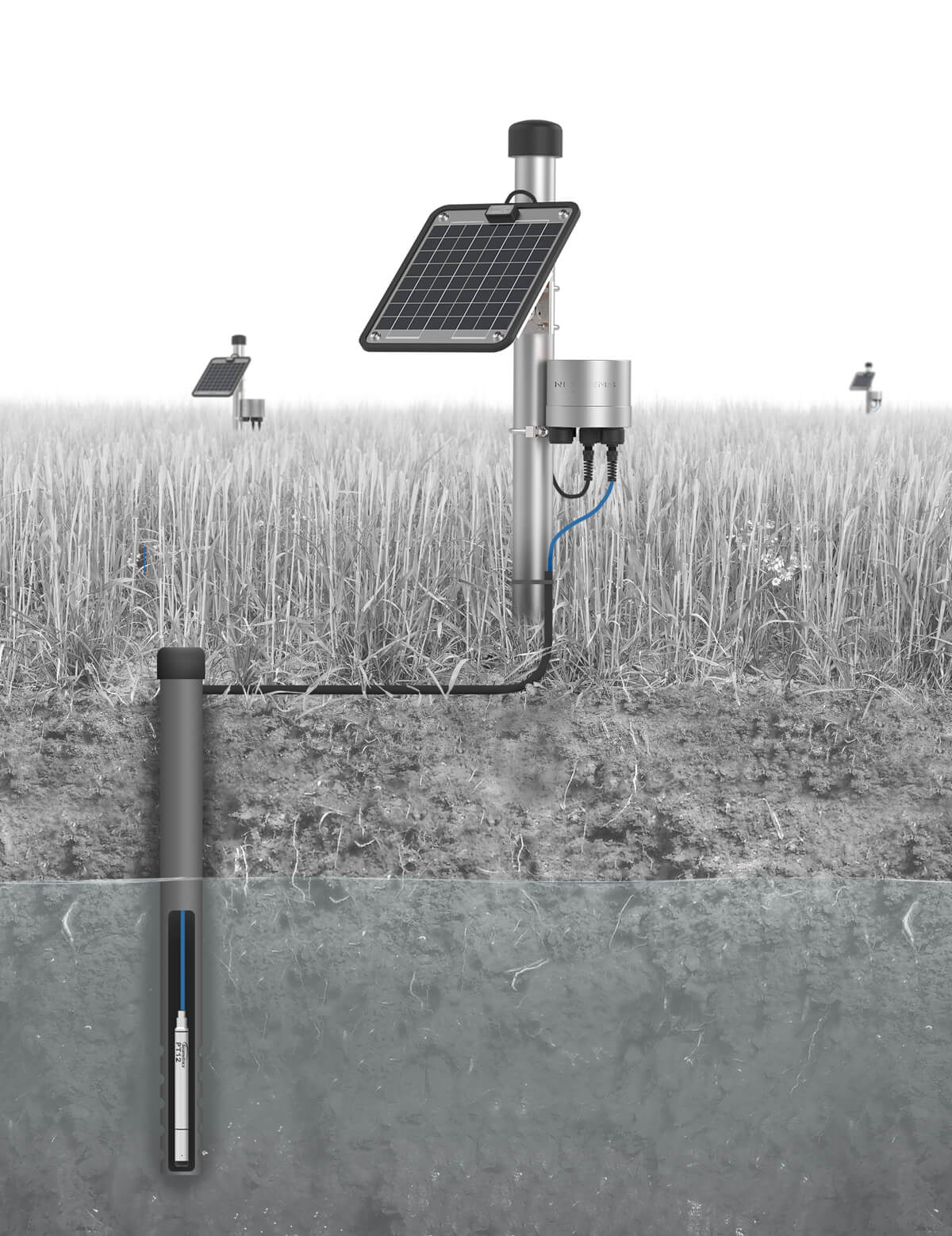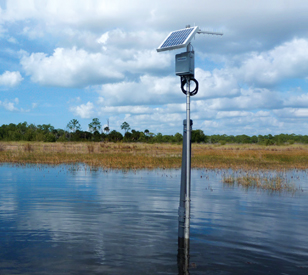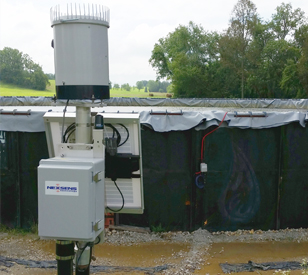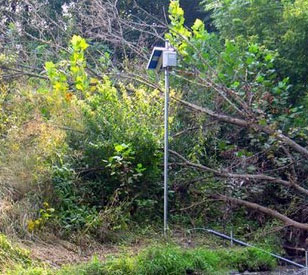Wellfield Monitoring System

Groundwater drawn from wellfields accounts for a significant portion of drinking water supplies throughout the world. Despite being located underground, wellfield water supplies are not exempt from threats. Real-time wellfield monitoring systems can provide valuable data to assist water managers in detecting contamination and avoiding excessive drawdown or other potential issues.
Wellfield Monitoring

Typical Wellfield Monitoring System
Wellfield monitoring systems typically consist of a network of sensors installed throughout an aquifer. Water level is the most basic parameter recorded, but systems can readily be expanded with water quality and weather sensors to provide a more comprehensive overview of conditions at wellfield sites.
The X3 data logger is the central component of NexSens wellfield monitoring systems. It is compatible with a range of sensor types from industry-leading manufacturers and transmits real-time data via radio, cellular, or satellite telemetry to the WQData LIVE web datacenter. WQData LIVE features a suite of data management tools including configurable email or SMS text message alerts when critical thresholds are exceeded.
Flexible mounting options for the X3 simplify installation in the field, and SP-series solar power packs deliver power for continuous operation. Waterproof UW sensor port connectors and automatic sensor detection facilitate efficient system start-up.
Sensors typically integrated into NexSens wellfield monitoring systems for water level monitoring include pressure transducers like the Seametrics PT12. Water quality sensors such as multiparameter sondes can also integrate level sensors alongside conductivity sensors, nutrient ISEs and other sensor types . Weather sensors such as tipping bucket rain gauges may also be integrated to track present conditions and develop correlations between precipitation and groundwater levels.
Contact a NexSens Applications Engineer today to discuss your wellfield monitoring application.

Case Studies
Wetland Research And Management
Wetlands the world over are important for a lot of reasons. For one, they are predicted to help buffer the effects of rising sea levels predicted alongside other effects of climate change globally. But on a more local scale, wetlands are important because they act as large living filters that increase water quality while at the same time providing habitat for large numbers of waterfowl and amphibian species. This is no less true for wetlands at the Everglades Wetland Research Park, a center in Naples, Florida run by Florida Gulf Coast University.
Read MoreTracking Water Impoundment Levels
Many energy companies are working throughout the shale gas regions of Pennsylvania and Ohio. One of these is Gulfport Energy, which has some prominent and high-producing wells in Belmont and Monroe Counties in Ohio. Both of the counties are ideally situated in the Marcellus Shale region and have yielded high production rates of natural gas for the company and consumers who rely on natural gas. But along with achieving the quality natural gas yields are a lot of management concerns for Gulfport Energy.
Read MoreWetland Effects on Water Quality
The Beaver Creek Wetlands are located on 700 acres containing rare fens, marshes, and forested areas. Over 470 species of plants are found within these wetlands, some of which are endangered or threatened. Beaver Creek’s wetlands are also defined by their groundwater-dominated hydrology with high conductivity and nutrient levels. Public access to the wetlands is available via a ¾-mile, wheelchair-accessible boardwalk that leads visitors through some of the richest and most diverse areas of the 12-mile-long corridor.
Read More






